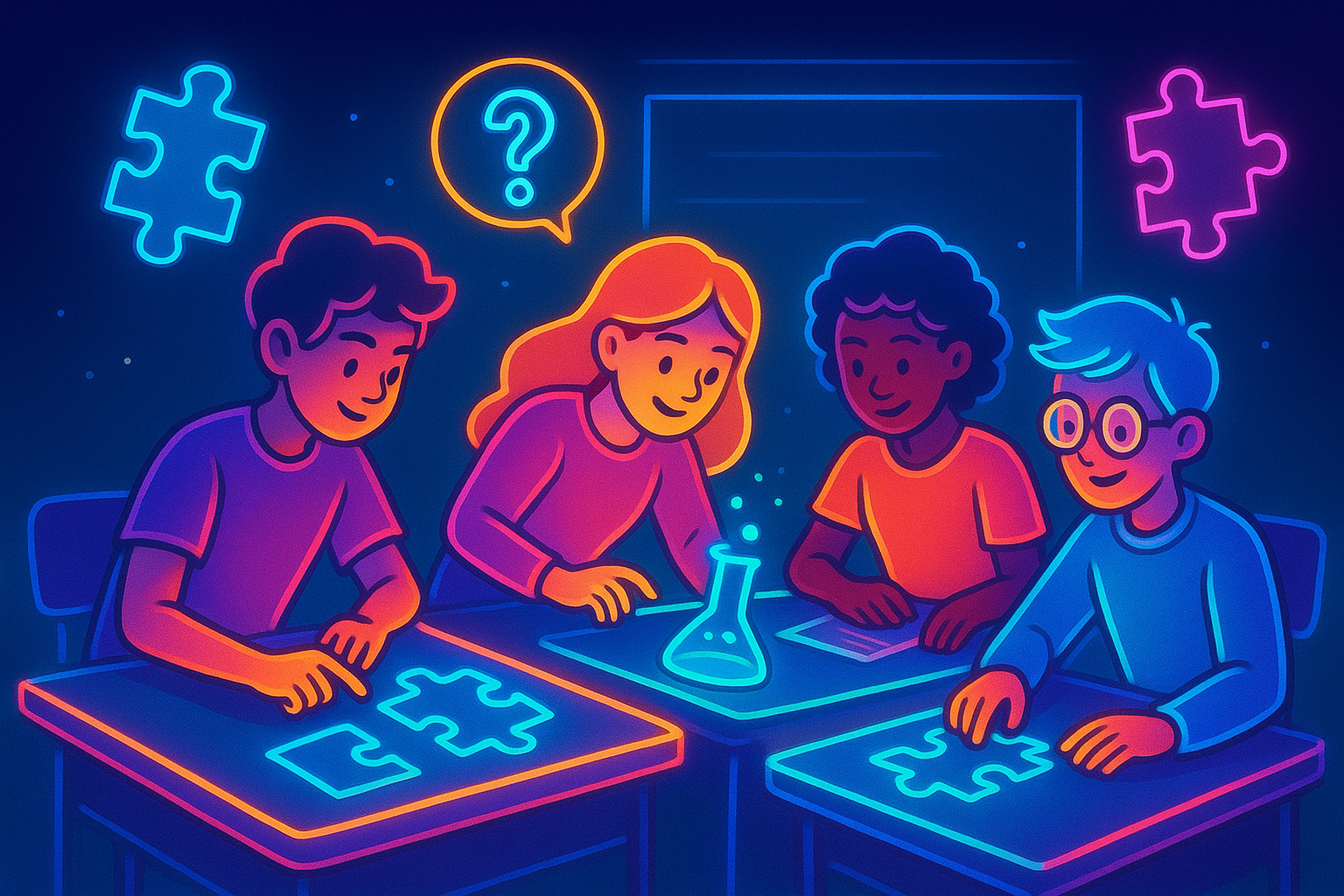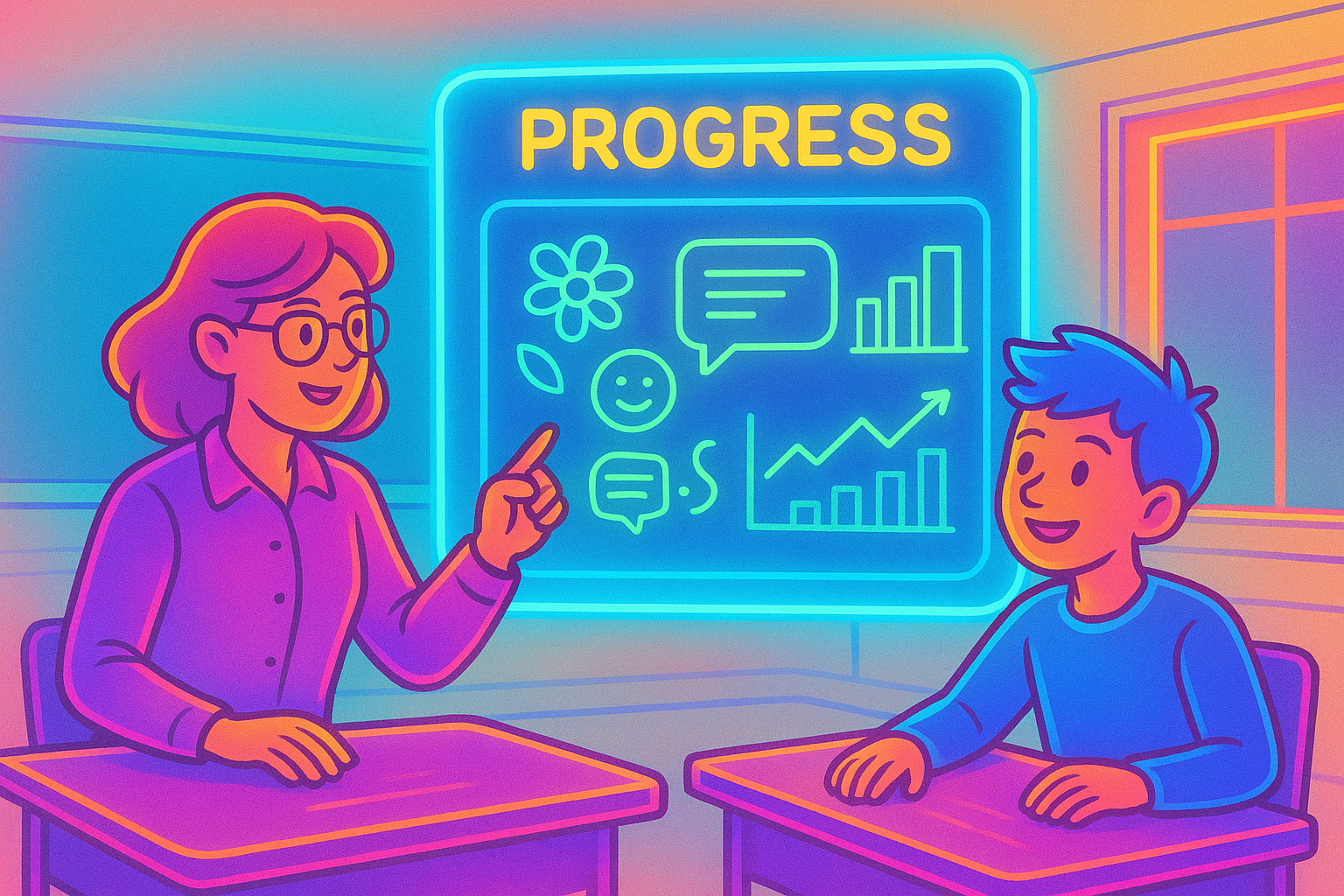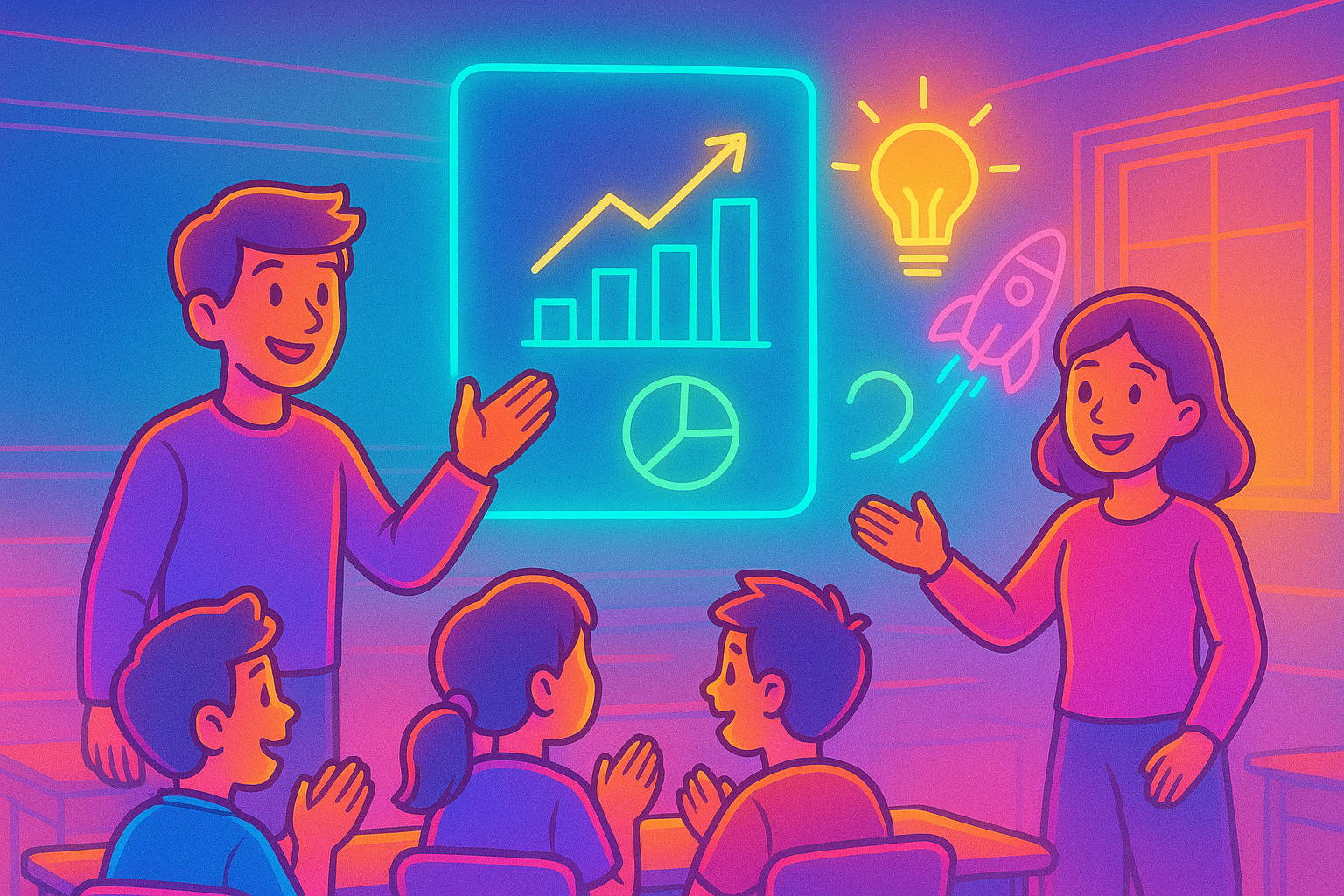Share this
How to Use the 5e Lesson Plan Model | Mission.io
by Ryann Garland on October 30, 2025
If you’ve ever wanted a teaching framework that feels structured but still leaves room for creativity, the 5E model is worth a look. Developed in the 1980s (the decade of big hair, neon, and now, lesson plan frameworks) by the Biological Sciences Curriculum Study, this instructional model follows how people naturally learn: first, they get curious, then they explore, explain, apply, and reflect.
Unlike rigid templates, the 5E lesson plan adapts easily to any grade level or subject area. Whether you’re teaching ecosystems in science, persuasive writing in ELA, or fractions in math, you can use the five phases to guide student learning and keep student engagement high.
Why Teachers Love the 5E Lesson Plan
Some teachers adopt the 5E model because it supports inquiry-based learning. Others appreciate how it shifts focus from teacher-led instruction to active participation. Translation: you talk less and they talk more. It’s every teacher’s dream.
The magic is in the cycle itself. Each phase builds on the last, helping students gain a deeper understanding without rushing or skipping steps. And because the model can be scaled to one lesson or two to three weeks, it fits into almost any curriculum plan (unlike that one disastrous field trip that somehow took you three months to recover from).
The Five Phases of the 5E Model
Here’s the structure in a nutshell:
- Engage – Hook interest and activate prior knowledge
- Explore – Let students actively explore through activities or group work
- Explain – Clarify key concepts and address knowledge gaps
- Elaborate – Apply learning in new, real-world contexts
- Evaluate – Reflect and measure student understanding
It’s not just a checklist. The learning cycle approach works because each phase sets the stage for the next. Skip one, and you risk weakening the whole experience.
Engage Students from the Start
The engage phase is all about sparking curiosity. Think quick demonstrations, surprising statistics, or short video clips, or anything that grabs attention without needing the fire extinguisher. You want students leaning in and asking questions.
In science, you might begin with a strange phenomenon, like a candle snuffing itself out under a glass jar. In ELA, maybe it’s a compelling quote tied to the unit theme. Whatever you choose, the goal is the same: engage students emotionally and intellectually while drawing out their prior knowledge.
The Explore Phase: Let Students Lead the Way

In the explore phase, the teacher steps back. Students work with materials, discuss observations, or solve challenges in small groups. Don’t step back and passively watch everything like a lifeguard. Just make sure nobody drowns in glue. Ask questions, prompt new thinking, and congratulate hard work. But let students pave the path forward.
This stage is key for inquiry-based learning. By giving space for curiosity, you also give space for misconceptions to surface naturally, which is essential for the next phase. And because this is a hands-on, active learning moment, it often becomes the most memorable part of the learning experience.
The Explain Phase: Connecting Ideas
Once students have explored, they’re ready for the explain phase. This is where students explain their observations in their own words and connect them to scientific concepts or core concepts in other subjects.
Sometimes, you’ll give direct instruction here. Other times, a whole class discussion will reveal that peers can explain the material just as well as you can, which can be very humbling when an eleven-year-old explains long division better than you just did. Either way, the focus is on turning exploration into clear, connected knowledge.
The Elaborate Phase: Going Deeper
The elaborate phase is where students apply new knowledge in a fresh way. In math, they might use a concept to solve a real-world problem. In history, they might analyze a different event using the same framework from a previous lesson.
This is also a great stage for students to work collaboratively on projects, presentations, or experiments. When students demonstrate problem-solving skills in new contexts, they move from surface-level recall to genuine deeper understanding.
The Evaluate Phase: More Than Just Tests
In the evaluate phase, you’re not just grading; you’re gauging student progress.

Sure, you might use a quiz or written assessment, but you can also use peer feedback, self-reflections, or creative products. The point is to assess students' understanding in ways that capture the full picture. For some lessons, a quick informal assessment might be all you need.
Engage-Explore-Explain-Elaborate: The Power of the Sequence
Why not just skip ahead to the “fun” part? Because the engage-explore-explain-elaborate sequence mirrors the brain’s natural learning cycle.
Think of it as scaffolding: each phase provides the structure for the next. Without that foundation, the new concepts don’t stick as well.
Adapting for Grade Level and Subject
The 5E lesson plan works for kindergarteners exploring plants and high schoolers analyzing literature. The key is adjusting time and complexity.
For younger grades, all five phases might fit into a single day. For older students, one phase might take several class periods.
Building Critical Thinking Naturally
Every phase of the 5E lesson supports critical thinking. From making predictions in the engage phase to justifying solutions in the elaborate phase, students are constantly reasoning, questioning, and refining ideas.
That’s why the model enables teachers to improve learning outcomes without making huge changes to their existing curriculum.
Closing Knowledge Gaps Without Stress
One of the most valuable parts of the model is how it surfaces knowledge gaps in a low-pressure way. During explore, students might realize their assumptions were wrong. During explain, you step in with the missing piece.
This organic correction builds confidence instead of discouragement.
Empowering Students Through Active Participation
When students see themselves as active partners in the learning process, everything changes. The 5E model gives them that role naturally, whether they’re discussing in groups, presenting findings, or reflecting in journals.
And when students feel ownership, student engagement skyrockets.
Using the 5E Model in Inquiry Based Learning
The 5E lesson plan was designed for inquiry-based science teaching, but it works in ELA, history, and even PE. Anywhere you can start with curiosity, give time to explore, and wrap with reflection, you can apply the model.
Practical Advice for New Teachers
Start small. Pick one unit and design it using the 5E lesson model. Use pre-made lesson plans if you’re short on time, then adapt them for your style.
Always keep the lesson objectives visible. This helps you stay on track and makes it easier for students to see the purpose. Otherwise, you’ll be halfway through a lesson and realize students somehow went from ecosystems to Pokémon habitats.
Measuring Success with Multiple Assessment Tools
Don’t rely on one measure. Pair various assessment tools like quick checks, portfolios, peer reviews, and traditional quizzes.

This gives you richer insights into student understanding and helps guide the next learning cycle.
How Mission.io Supports 5E Teaching
At Mission.io, our ready-to-use activities can slot right into your engage, explore, or elaborate phase.
Whether you need a quick opener or a deep-dive project, our Missions and resources are designed to keep student engagement high while supporting learning outcomes.
Final Thoughts
The 5E lesson plan isn’t just another lesson plan template. You've seen plenty of those. It’s a comprehensive learning experience that mirrors how people learn best.
By using all five phases, you encourage students to think critically, apply ideas, and reflect meaningfully. And whether you’re teaching science, literature, or art, the 5E model will help your students leave with more than just the facts; they’ll leave with genuine understanding.